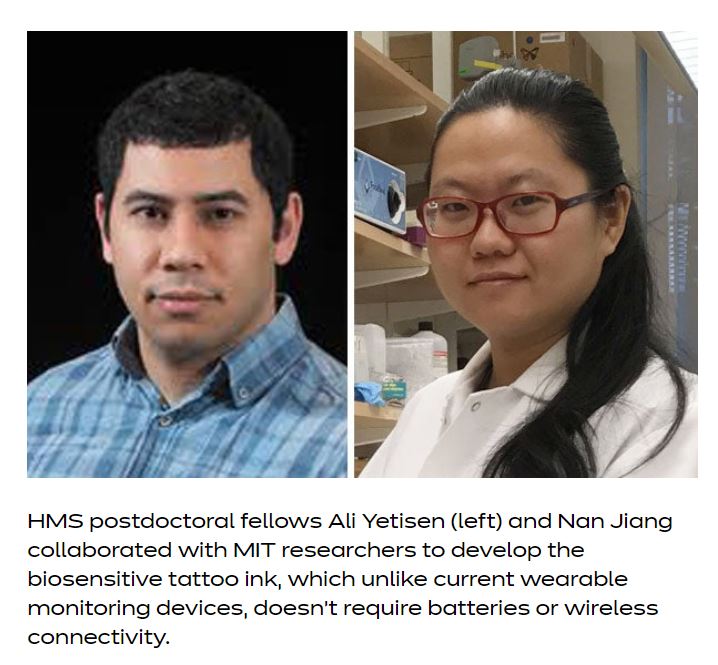The Dermal Abyss Project

Two postdoctoral fellows at Harvard Medical School, Nan Jiang and Ali Yetisen, have been working on a study involving bio-sensitive tattoo inks that could become the next thing in wearable medical technology, The Dermal Abyss Project. Working with MIT researchers the study has started the development of smart tattoo inks that would change colour to convey medical information to the individual. One application in particular they are focusing on would be the colour changing to alert a diabetic of low or high blood sugar. Incorporating bio sensors in the skin is the next thing in wearable technology; tattoos provide a unique and aesthetic way to do so.
The research team saw the drawbacks with wearable technology: they don’t seamlessly integrate with the body, and having to charge or change batteries on these life saving devices is a big obstacle in someone’s life who relies on these devices. With bio-sensitive inks these issues aren’t present since tattoos have been around for so long we know that they integrate well with the body and that of course there’s no charging.
Nan Jiang says that the Dermal Abyss project was a proof of concept study, meaning the goal of the study was proving that it can be done and that the inks are reactive to what they are supposed to be reactive to. However more fine tuning and stabilizing needs to happen to ensure the inks stay in place and that they don’t fade too quickly if they were to be used broadly. An MIT media lab publication makes it very clear that this was just a proof of concept research project and that at this point they’re not looking to move to clinical trials or further development themselves.
The inks work by sensing the interstitial fluid of the body, which is the fluid that your cells are surrounded by. This fluid sits in between capillaries carrying blood with nutrients and the cells that they exchange these nutrients with, so the bio sensors can sense the same things that are in the blood, in the interstitial fluid. Which gives it the ability to sense things like sugar level and sodium levels right on the skin, like in this case carried by a tattoo.

They developed their inks to react to the chemistry of the bodies interstitial fluid. Their blood sugar sensing ink, this one changes from green to brown as glucose concentration rises. They’ve also developed a light sensitive ink, that is green under blue light, with growing colour intensity as sodium levels rise, which shows dehydration. They test these in the skin by using pig skin and manipulating the chemical that causes the colour changes.
One of the postdocs, Yetisen, has developed an app that can scan the sensor and give you specific quantitative results rather than just the colour being ‘good or bad’ for the patient’s needs. The app in conjunction with the bio sensitive ink can actually give specific data to remedy the situation. Jiang and Yetisen say that once the project is perfected there is a wide range of applications from long term tattoos for chronic patients to temporary designs for those who only need short term monitoring. Though their main focus is everyday patients Yetisen is optimistic that one day we may be able to use this technology for astronauts, who’s medical information needs to be monitored constantly.
Jiang says in the Harvard Gazette, “The purpose of the work is to light the imagination of biotechnologists and stimulate public support for such efforts,” Jiang continues, “These questions of how technology impacts our lives must be considered as carefully as the design of the molecular sensors patients may someday carry embedded in their skin.” She also raises ethical questions about the ink such as if people are willing to wear their medical information out in the open like a tattoo.
All in all this very cool project is the combined efforts of curious minds from Harvard and MIT that has the potential to change how we use both tattoos and medical wearable devices.
Dermal Abyss Video:
Sources:






































































